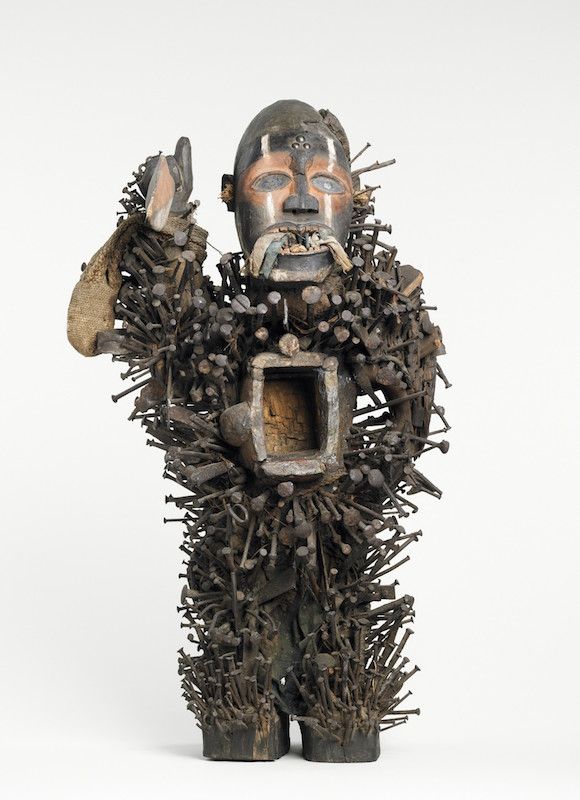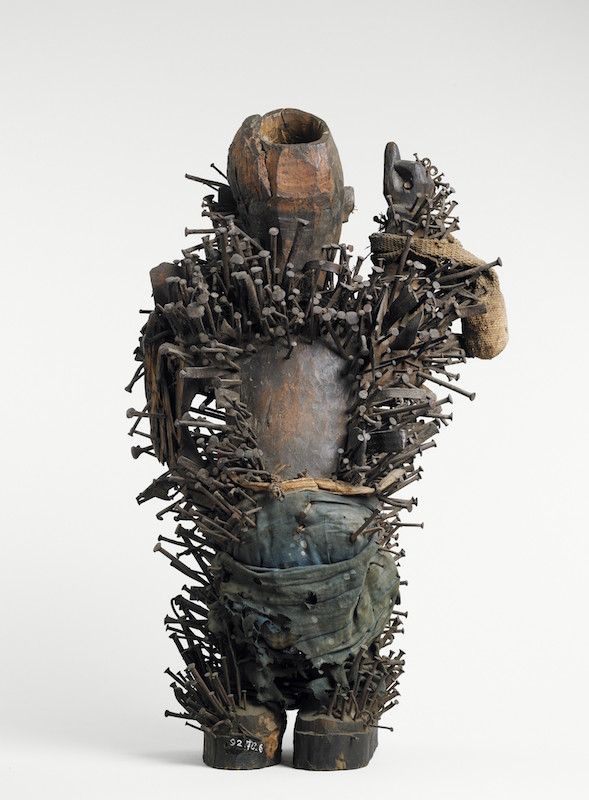While in Paris I also paid a visit to the Musée du quai Branly. I first visited the Musée du quai Branly shortly after the opening in 2006. I remember queuing for more than an hour to get in. I didn't like the building designed by Jean Nouvel then and I still don't like it now. What's more, after only ten years the building is already showing wear and tear. Like so much contemporary architecture it doesn't age well.
The museum is cast in red and black. The main entrance, which looks more like a side entrance, gives way to a large, uninviting, nondescript space. From there it's a long walk to the toilets and an even longer walk along a gently sloping, winding ramp to the main gallery. Inside it's dark. Hardly any daylight enters the building. The objects on display are lit by spotlights. Both the architecture and the exhibition design seem to be the result of theoretical considerations about what an ethnographic museum (for lack of a better word) should be and how ethnographic objects (again, for lack of a better word) should be displayed. However, unlike generic spaces the architecture of the Musée du quai Branly doesn't leave much room for changes in exhibition philosophy.


Criticism of the building aside, the collection of the Musée du quai Branly is outstanding. The museum houses one of the largest permanent displays of ethnographic and anthropological artefacts from around the world. The emphasis is on Oceania and Africa, although my impression may reflect the fact that this is where I spent the most time. I revelled in the museum's large collection of masks from different cultures and I was delighted to see numerous fascinating sculptures.
I may visit again in five or ten years time.